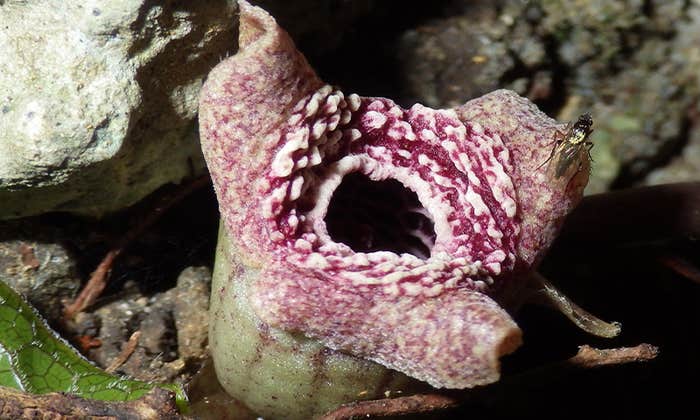Dad was back. He played a little with the children, rubbed a few heads with his own, clawed at a wooden post, and then, standing erect with tail straight up, he backed towards a tree, sprayed, and left. The kids scampered over. They stood on their hind legs and carefully examined the spray—the family smell. It was a comforting scent containing specific chemicals called pheromones, evolutionarily adapted to specific purposes he intended. Urine spray has a strong odor that announces to other males in the area that this was his territory and these were his babies. The clawing, too, left a message, deposited by the scent glands between his toes. When a cat scratches an object, it leaves more than a visible mark; the animal leaves its signature scent that communicates ownership. There are also scent glands in the facial skin of the forehead, cheeks, chin, and lips that contain specific calming pheromones. These pheromones are saved for friends and family. By rubbing his head on the kittens, an act called bunting, he was sharing that scent—a sign of affection.
A different chemical signal, the spray of a dominant male cat, heavy in 3-mercapto-3-methylbutan-1-ol (or MMB), not only marks the territory of a dominant male cat but also chemically suppresses the sexual behavior of other males entering that territory, defends his mating priority with the females, and aids in the protection of his offspring. The animals acting instinctively are carrying out patterns of behavior cued by the emission and reception of chemical signals.
Pheromones are an important communication medium for many animal species, including possibly for humans. The broadcasting of chemical information is one of the oldest, most widespread, and diverse forms of communication. From an evolutionary standpoint, smell was the first sense, and our brains evolved in part to process olfactory information. Dealing with smell stimuli may have “turned a small lump of olfactory tissue on its [a primitive fish’s] nerve cord into a brain,” in the words of biologist Lyall Watson.
In spring the air of your back yard is a pheromonal stew. Chemical signaling between insects, between plants, and between plants and insects happens all around. Plants call for pollinators with hauntingly beautiful scents. Ants leave pheromone trails to the food in your house, and flies, as well as other insects, release pheromone sexual attractants. Snakes that live near the woodpile taste the air with their forked tongues to bring pheromone molecules to the receptors in the roof of their mouths.
Communication by smell also works underwater, where fish use pheromones to synchronize courtship and spawning behavior. Sharks are often called swimming noses. Under their snouts are two nasal cavities with two openings; water is pulled in one and pushed out the other. This olfactory system is designed to allow the shark to track and analyze pheromones of its prey and search for potential mates, but not for breathing, which is performed by its gills.
Though pheromone compounds and how they are utilized were once considered species specific, as the field progresses, studies show that many pheromones are utilized by different species to communicate in similar ways. For example, studies done on Asian elephants and 126 species of insects revealed very similar mating rituals due to their shared sex-pheromones of acetate mixtures. There exists a stockpile of chemical compounds, functioning as pheromones, developed from millions of years of evolution. Evolution has seen to it that organisms can utilize chemical communication to accomplish biologically imperative tasks.
It’s not entirely clear how important communication-by-odor is to Homo sapiens; the evidence is mixed and actively debated. Some of the first evidence suggesting that humans produce airborne compounds that affect others originated from Martha McClintock’s 1971 study published in Nature. She reported her findings that women living together in close proximity can develop synchronized menstrual cycles. Menstrual synchrony is reported in other animals, such as monkeys; however, the idea of menstrual synchrony in humans has not been consistently verified. Nonetheless, our mental doors opened to the idea that the social behavior of humans, too, is managed by chemical code.
There exists a stockpile of chemical compounds, functioning as pheromones, developed from millions of years of evolution.
In a more recent experiment by McClintock and Tom Hummer, they discovered that androstadienone modulated human psychological responses, focusing the mind to engage with social and emotional information. This pheromone, produced in the male human body (as well as the bodies of male pigs) during the metabolism of testosterone, is excreted in sweat, saliva, and urine. In tests that expose women to androstadienone, researchers found that social context appeared very important for the compound’s effects—i.e., changes in mood most often occurred when a male researcher conducted the testing.
Androstenone is another pheromone found in pigs and humans, though it’s not clear if it has truly pheromonal effects in people. A spray of this steroid on a sow, without any boars anywhere around, will instantly trigger her to assume a copulative-ready mating stance. Androstenone is also found in human perspiration, male and female, as well as in truffles and celery (which is why pigs can find truffles). A study by Leslie Vosshall and Andreas Keller showed that the ability to perceive androstenone is a heritable trait determined by a person’s genetics. Curiously, to some people it smells like vanilla; to others, urine. And some people can’t smell it at all.
The idea that humans could use pheromones sparked neurobiologist Noam Sobel and his colleagues of the Weizmann Institute in Israel to investigate. Does the smell of women’s tears affect men? Could that effect be increasing empathy? Female participants watched movies that elicited sadness, and researchers collected their tears to put under men’s noses as an unidentified fluid. The test found that a chemical message in the tears reduced men’s testosterone levels, thus reducing sexual arousal. Tears signified that sex was not in the cards.
Along with sex, the role of human pheromones is most obvious to us in maternal behavior—mother-child bonding. Shortly after a baby is born, mothers are able to recognize their smell and the babies also find their mother’s breasts by smell. In fact, much of a baby’s early behavior is explained by olfactory bonding. A new study published last month in Frontiers in Psychology reports that the odor of newborns activates changes in neurological circuits of the mother’s brain located in the area associated with reward, which is mediated primarily by the neurotransmitter dopamine.
Two days after the birth of newborns, researchers collected their odors from their pajamas and presented them, along with a control of fresh air samples, to two groups of women, some of whom had recently given birth, some who never had. Both groups of women perceived the odor as similarly pleasant. However brain imaging showed that in the women who had given birth, there was greater activation in the caudate nucleus, an area involved in pleasure and reward learning. This study suggests that evolution has provided helpless newborns with powerful natural smells to elicit the level of maternal care they need.
The rich and complex biochemical communication is the silent language of living worlds. Molecules are used as information, transmitting data like the zeros and ones in digital computers. Chemical code is a central part of evolution, capable of affecting our consciousness in one inhalation.
Gayil Nalls, Ph.D, is an interdisciplinary artist, philosopher, and theorist. Her work investigates personal and collective sensory experiences, memory, and identity.


























